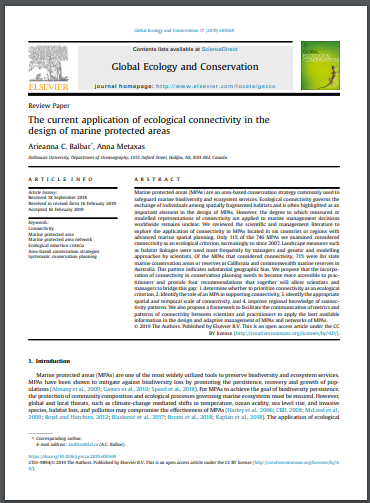
Marine protected areas (MPAs) are an area-based conservation strategy commonly used to safeguard marine biodiversity and ecosystem services. Ecological connectivity governs the exchange of individuals among spatially fragmented habitats and is often highlighted as an important element in the design of MPAs. However, the degree to which measured or modelled representations of connectivity are applied to marine management decisions worldwide remains unclear. We reviewed the scientific and management literature to explore the application of connectivity in MPAs located in six countries or regions with advanced marine spatial planning. Only 11% of the 746 MPAs we examined considered connectivity as an ecological criterion, increasingly so since 2007. Landscape measures such as habitat linkages were used most frequently by managers and genetic and modelling approaches by scientists. Of the MPAs that considered connectivity, 71% were for state marine conservation areas or reserves in California and commonwealth marine reserves in Australia. This pattern indicates substantial geographic bias. We propose that the incorporation of connectivity in conservation planning needs to become more accessible to practitioners and provide four recommendations that together will allow scientists and managers to bridge this gap: 1. determine whether to prioritize connectivity as an ecological criterion, 2. identify the role of an MPA in supporting connectivity, 3. identify the appropriate spatial and temporal scale of connectivity, and 4. improve regional knowledge of connectivity patterns. We also propose a framework to facilitate the communication of metrics and patterns of connectivity between scientists and practitioners to apply the best available information in the design and adaptive management of MPAs and networks of MPAs.






